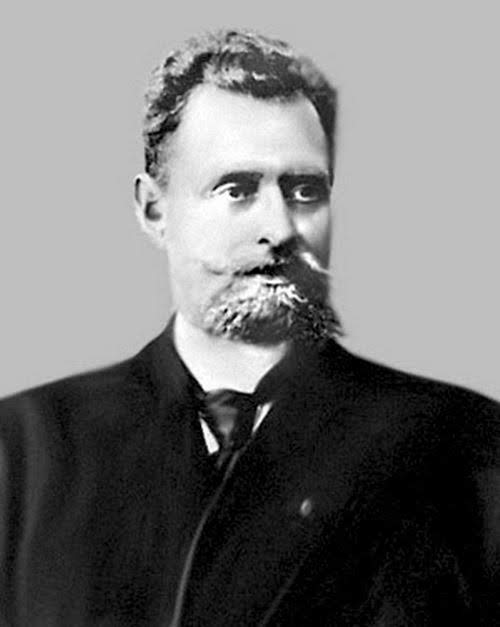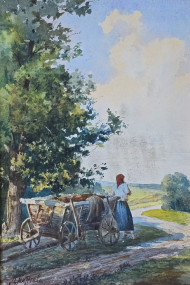- Home
- Dmytrenko Yurii (Georgy) - architect, creator of beautiful Odessa
Dmytrenko Yurii (Georgy) - architect, creator of beautiful Odessa

Yurii Dmytrenko: The Architect Who Shaped Odesa's Identity
Yurii (Georgy) Melentiyovych Dmytrenko (March 23, 1858 — July 5, 1918) was a distinguished Odesa architect, educator, and public figure whose name is inextricably linked to the formation of Odesa's unique architectural landscape in the late 19th and early 20th centuries. His multifaceted work spanned a wide range of styles, from Neo-Renaissance to Art Nouveau, leaving behind a rich legacy of iconic structures, many of which are now recognized as architectural monuments.
Early life and education
Born in Odesa to a merchant family of the 2nd guild, Yurii Dmytrenko displayed artistic talent from an early age. Concurrent with his studies at the renowned Richelieu Gymnasium, he attended the Drawing School of the Society of Fine Arts, where he was mentored by masters like sculptor L.D. Iorini and painter A. Bauer. His classmates included future luminaries of Odesa's architecture and art, such as F. Nesturkh and K. Kostandi.
In 1876, Yurii Dmytrenko enrolled in the Imperial Academy of Arts in St. Petersburg, initially in the painting department, but soon dedicated himself to architecture. In 1880, even before graduating from the Academy, he began working in the workshop of the famous Odesa architect A.I. Bernardazzi, contributing to the design of Odesa's new city theater. In 1885, he graduated with honors, earning the title of Class Artist of the 1st degree.
Academic and public activities
Upon his return to Odesa, Yurii (Heorhiy) Dmytrenko actively engaged in teaching and public life. From 1883, he began teaching architecture at the Odesa Drawing School. He held several important positions, including **Eparchial Architect**, architect for the Institute for Noble Maidens, and architect for the City Theater. His contribution to the development of art education was significant, and in 1917, he was elected to the commission for the reform of Odesa's art school.
Dmytrenko was also an active member of the Odesa Branch of the Russian Technical Society and the first chairman of the Odesa Branch of the Russian Society of Architect-Artists, underscoring his role in the professional community.
Key projects and buildings in Odesa
Yurii Dmytrenko's creative legacy is immense and diverse. He is the author of over 70 buildings in Odesa, many of which have become city landmarks. Among his most significant works are:
- Londonska Hotel (11 Prymorsky Boulevard, 1899-1900) – a striking example of early Neo-Renaissance, recreating the atmosphere of Northern Italian cities.
- Accounting Bank (12 Pushkinska Street / 13 Hrecheska Street, 1904-1906) – a monumental structure showcasing Dmytrenko's mastery in facade plasticity.
- S. Hryhorieva's Apartment Building (15 Lanzheronivska Street, 1912-1913) with elements of Spanish Gothic, where the famous Fanconi Cafe once stood.
- Land (Peasant) Bank (34 Marazliyivska Street, 1908-1914) – the only example of Neo-Russian style in Odesa.
- Varfolomei Anatra's Dacha (28/30 Frantsuzky Boulevard, 1911) – an elegant building imbued with romanticism.
- Reinforced Concrete Bathhouses at Lanzheron – an example of his innovative use of reinforced concrete in his designs.
Beyond large-scale projects, Dmytrenko also designed smaller architectural forms, such as an ice cream pavilion in the City Garden (1888) and a music pavilion on Prymorsky Boulevard (1890). He also made a significant contribution to shaping the appearance of Orthodox Odesa, designing churches and monastic courtyards, including the Church of St. Demetrius of Rostov and the St. Andrew's Courtyard of the Athos Monastery.
Recognition and legacy
Yurii (Heorhiy) Dmytrenko was awarded the Order of Saint Stanislaus 2nd Class (1900). His works, characterized by high quality craftsmanship and durability, have withstood the test of time, wars, and natural disasters. Today, almost all the buildings he designed are recognized as architectural monuments, testifying to his undeniable contribution to Odesa's cultural heritage.
On July 5, 1918, Yurii Melentiyovych Dmytrenko passed away. In 2017, a memorial plaque was unveiled in his honor at 8 Derybasivska Street, where he spent the last years of his life. His artistic journey serves as an example of combining architectural traditions with innovative approaches, and his buildings continue to inspire and delight the residents and visitors of Odesa.
- 30
- 60
- 90







